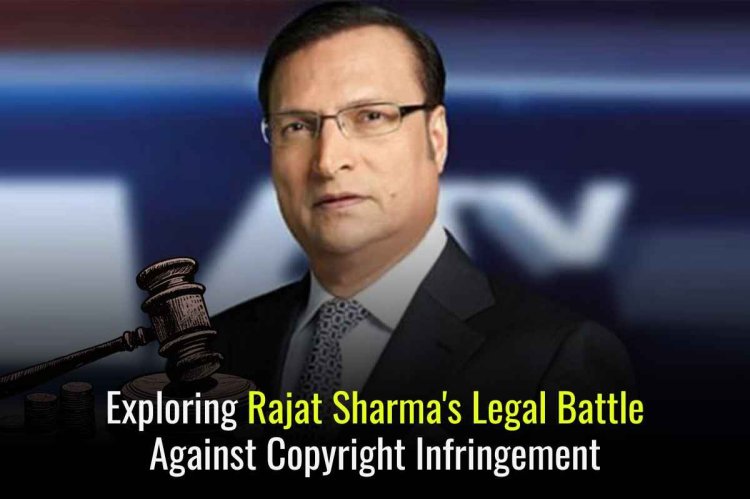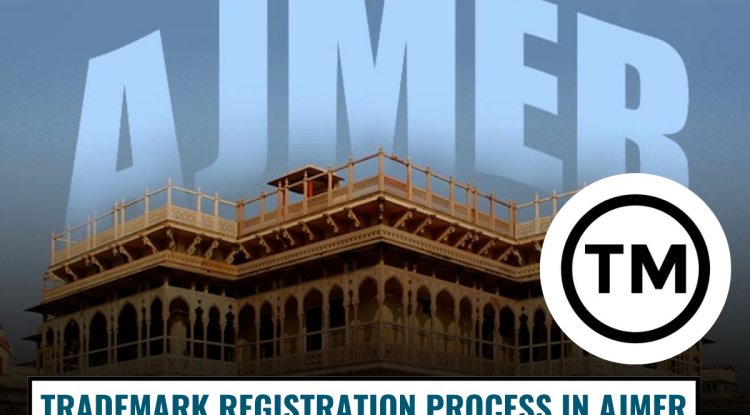Exploring Rajat Sharma's Legal Battle Against Copyright Infringement
In the digital era dominated by artificial intelligence and deepfake technologies, safeguarding intellectual property and personality rights is paramount. The Delhi High Court's interim injunction in favor of Rajat Sharma and India TV on December 18, 2024, underscores the legal frameworks necessary to combat AI-driven misuse of persona and trademarks. The ruling, addressing the unauthorized exploitation of Sharma's persona and India TV's trademarks, highlights critical issues in public trust, digital platform accountability, and the evolving challenges posed by AI technologies. This case sets a precedent for protecting digital rights and reinforcing public trust in an age of misinformation.

In an era where digital media and artificial intelligence (AI) have revolutionized the dissemination of content, safeguarding intellectual property and personality rights has become more critical than ever. Public figures, who represent trust and accountability, are increasingly targeted by malicious actors leveraging emerging technologies like deepfakes to spread misinformation. One such case is that of Rajat Sharma, the Chairman and Editor-in-Chief of India TV, who recently took legal action to protect his persona and trademarks from unauthorized exploitation.
The Delhi High Court’s interim injunction on December 18, 2024, marked a significant milestone in addressing these challenges. This ruling not only safeguarded Sharma’s rights but also underscored the importance of legal mechanisms to combat the misuse of AI and other technologies in the digital age.
Background of the Case
Rajat Sharma is a household name in Indian journalism, recognized for his shows Aap Ki Adalat and Aaj Ki Baat. Known for his credibility and trustworthiness, Sharma's reputation is built on decades of journalistic integrity. However, this very reputation became a target when certain individuals and entities began misusing his likeness and the trademarks of India TV for fraudulent purposes.
Sharma and his legal team alleged that the infringers employed deepfake technology and AI-generated content to falsely portray him endorsing remedies for health conditions like diabetes, prostatitis, and joint pain. These claims included assertions that the drugs were formulated by eminent doctors or certified by the government, further misleading the public. Such actions not only risked tarnishing Sharma’s reputation but also posed potential harm to individuals who might trust these fraudulent endorsements.
The Court Proceedings
Represented by Advocate Saikrishna Rajagopal, alongside Disha Sharma, Snehima Jauhari, and Deepika Pokharia, Sharma and India TV presented their case before the Delhi High Court. The plaintiffs argued that the unauthorized use of Sharma’s persona, name, and likeness, coupled with the exploitation of India TV’s trademarks and copyrighted materials, constituted a blatant violation of intellectual property laws.
The defendants were accused of circulating doctored videos and exploiting Sharma’s image to promote their products. The legal team emphasized that such actions not only infringed upon Sharma’s personality rights but also jeopardized public trust. The second plaintiff, representing India TV, claimed exclusive copyrights over the channel’s broadcasts, including the widely viewed show Aaj Ki Baat.
The Delhi High Court’s Ruling
After hearing the arguments, Justice Amit Bansal issued an interim injunction in favor of Rajat Sharma and India TV. Recognizing the severity of the situation, the court stated, “A prima facie case is made out in favour of the Plaintiffs and against the Defendants. Balance of convenience is also in favour of the Plaintiffs and against the Defendant. If the Defendants are permitted to continue publishing the aforementioned infringing posts/videos, the Plaintiffs will suffer irreparable harm”
The court’s decision encompassed several key directives:
· Restraint on Exploitation:
The defendants were prohibited from exploiting Sharma’s name, likeness, and persona through any medium, including AI-generated or deepfake content, without his express written consent.
· Trademark Protection:
Unauthorized use of India TV’s registered trademarks for personal or commercial purposes was explicitly barred.
· Content Removal and Accountability:
Meta Platforms Inc., the parent company of Facebook and Instagram, was instructed to immediately remove the infringing content and disclose the identities of the individuals responsible for uploading such material.
· Future Safeguards:
The plaintiffs were granted the right to request takedowns of any new infringing material discovered during the course of the proceedings.
Significance of the Ruling
This ruling holds profound implications for protecting digital rights in an era dominated by AI and deepfake technologies. By prioritizing personality rights and intellectual property, the court set a robust precedent to deter such violations in the future.
· Protection Against AI Exploitation:
The court’s emphasis on restraining AI-generated deepfake content is particularly notable. With advancements in technology, deepfakes have become increasingly convincing, raising concerns about their misuse in tarnishing reputations or spreading misinformation.
· Preservation of Public Trust:
As a journalist, Sharma’s professional standing carries a heightened sense of accountability. The court’s intervention not only safeguarded his reputation but also reinforced the need to protect public trust from being eroded by false endorsements.
· Accountability for Platforms:
By directing Meta Platforms to remove infringing content and reveal the identities of those responsible, the court acknowledged the role of digital platforms in curbing the spread of misinformation.
Broader Implications for Public Figures
The misuse of Sharma’s persona highlights the vulnerability of public figures in the digital age. Unlike traditional celebrities who often endorse commercial products, journalists like Sharma represent credibility and integrity. The unauthorized use of their likeness for fraudulent purposes can lead to significant reputational damage and public harm.
This case serves as a wake-up call for public figures and policymakers to address the risks posed by emerging technologies. Legal frameworks must evolve to combat the misuse of AI and ensure the protection of intellectual property and personality rights.
The Role of Legal Frameworks
The Delhi High Court’s decision underscores the importance of legal mechanisms in upholding digital rights. However, this case also reveals the challenges in navigating the complexities of AI-driven violations.
· Strengthening Legislation:
Existing intellectual property and personality rights laws need to be updated to address the unique challenges posed by AI and deepfake technologies.
· Public Awareness:
Educating the public about the risks of misinformation and the misuse of AI is crucial. Public figures can play a vital role in raising awareness about these issues.
· Collaboration with Digital Platforms:
Courts and governments must collaborate with social media platforms to ensure swift action against infringing content while maintaining transparency and accountability.
Conclusion
The Delhi High Court’s ruling in Rajat Sharma’s case marks a significant step forward in protecting personality rights and combating the misuse of AI and deepfake technologies. By recognizing the potential harm caused by such violations, the court not only safeguarded Sharma’s reputation but also set a precedent for addressing similar challenges in the future.
As the digital landscape continues to evolve, it is imperative for individuals, public figures, and policymakers to remain vigilant against the misuse of technology. Protecting intellectual property and ensuring accountability in the digital realm are essential for preserving trust and integrity in today’s interconnected world.
This case serves as a powerful reminder of the need to uphold the rights of individuals and combat the spread of misinformation in the age of AI.












